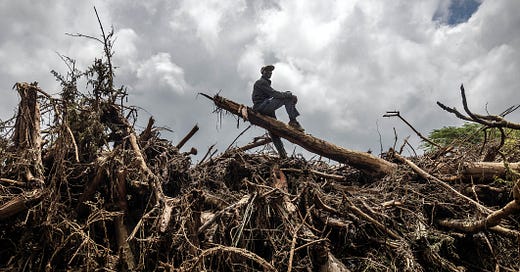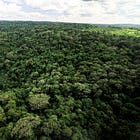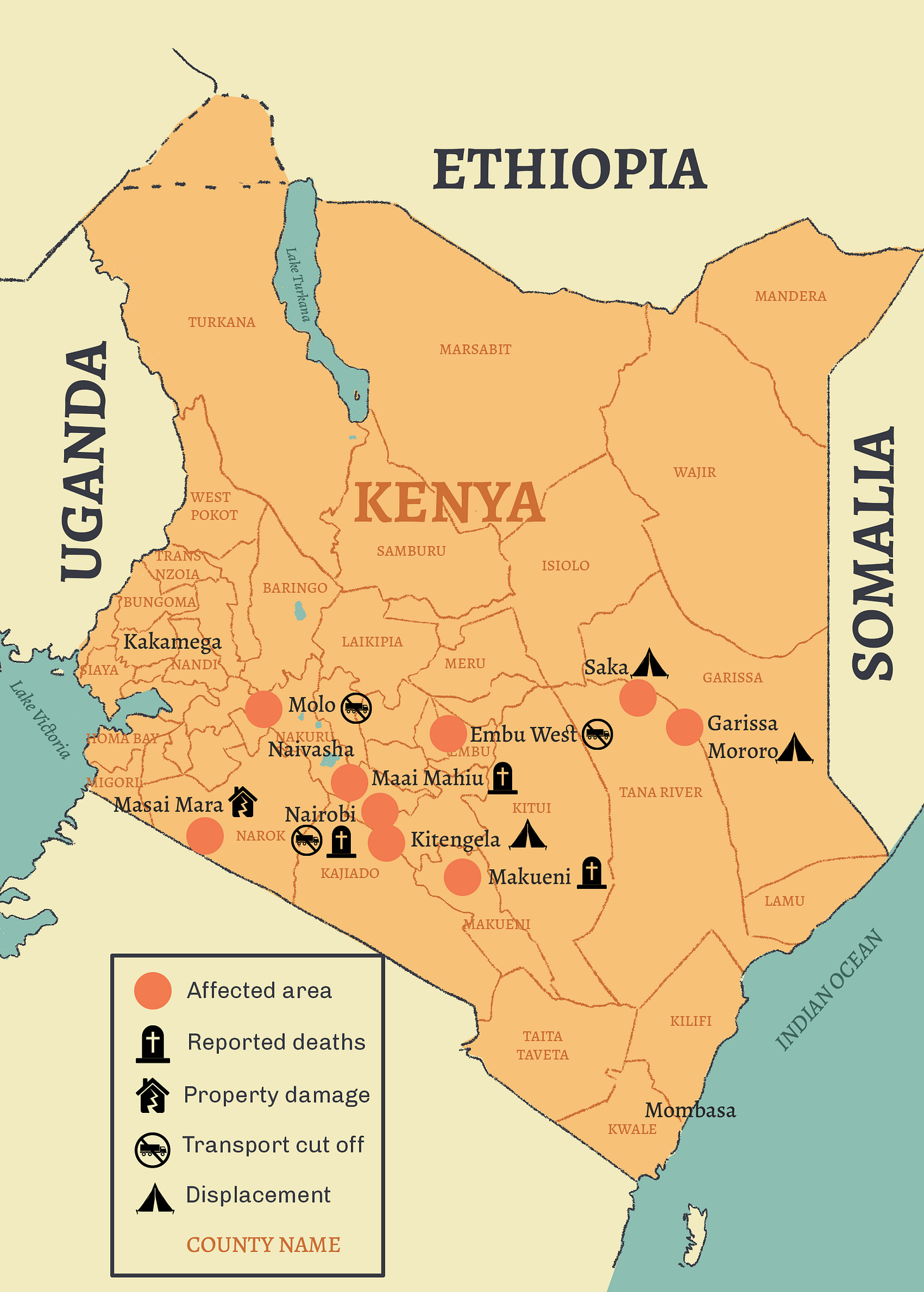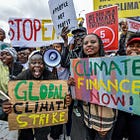Kenya: Burst dams, washed-away bridges and lost lives
The worst floods in 30 years took the country by surprise – despite the president styling himself as a global climate-change campaigner.
Lydia Namubiru
Southern Kenya is the best Kenya. Its lush green landscapes spread from the dramatic escarpments of the Rift Valley in the west, through Nairobi’s highlands, down to the Masai Mara’s expansive plains and on to the sweeping beaches of Lamu, Malindi and Mombasa in the east. But it has taken quite the beating over the past two weeks.
Rains that started in the middle of March have been historic in their intensity. Bursting rivers and dams, and causing flash floods that have destroyed lives, homes and infrastructure.
The catastrophes began with the swelling of the Mathare River in the early hours of 23 April. Gushing through the densely populated, low-income area named after the river, the waters swept aside shanty houses, children and adults. At least 40 bodies have been pulled from the river so far, but at least two dozen residents are still missing, according to the Mathare Social Justice Centre.
Three days later, at least 10 people died when a lorry crossing the swollen River Kwa Muswii in Makueni County overturned. The next day, busloads of travellers were stranded at Kona Punda when the River Tana burst, damaging a section of the Garsen-Lamu highway.
Meanwhile, in the capital Nairobi, major roads like the Thika Superhighway in several places, to the point of being and the Eastern Bypass were flooding impassable or nearly so.
The most shocking incident would come on 29 April, near the Maai Mahiu town of Nakuru county. Deep in the night, a water channel built in the 1930s burst its walls and sent water and mud downhill, flooding at least 100 homes. At last count, more than 70 people had died.
On the heels of that tragedy, the Talek River in the Masai Mara burst its banks on Wednesday, flooding pricy resorts and forcing the evacuation of tourists. At one resort, tourists spent the night perched on water tanks to escape the rising waters gushing through their booked accommodations.
Reeling from the scale of it all, Kenyans have blamed everyone and everything.
President William Ruto has blamed climate change, which he has consistently identified as the greatest challenge facing Africa. In turn, he and his government are being blamed by traumatised survivors – just the latest in the succession of governments that have failed them. “If anyone claims my mother died because of climate change, just know they are lying. It was the government that killed her,” Collins Obondo told Al Jazeera. He is the son of activist Benna Buluma, who drowned in Mathare on 23 April.

“My mother spent years fighting for the neglected people of the slums,” Obondo said. “And it was that same government neglect that killed her.”
The Institution of Surveyors of Kenya blamed a general disregard for planning and zoning regulations by property developers, and on the destruction of wetlands as people settled into riverside areas like Mathare.
But all agree on one thing: Kenya was just not ready.
This is despite Ruto’s very public warnings on the danger of climate change, and after Nairobi’s hosting of the inaugural Africa Climate Summit last year. But speaking in Maai Mahiu on Tuesday, he admitted that Kenya doesn’t have a plan. “We must have a complete plan to manage our affairs in the context of the new normal, the new reality of climate change.”








